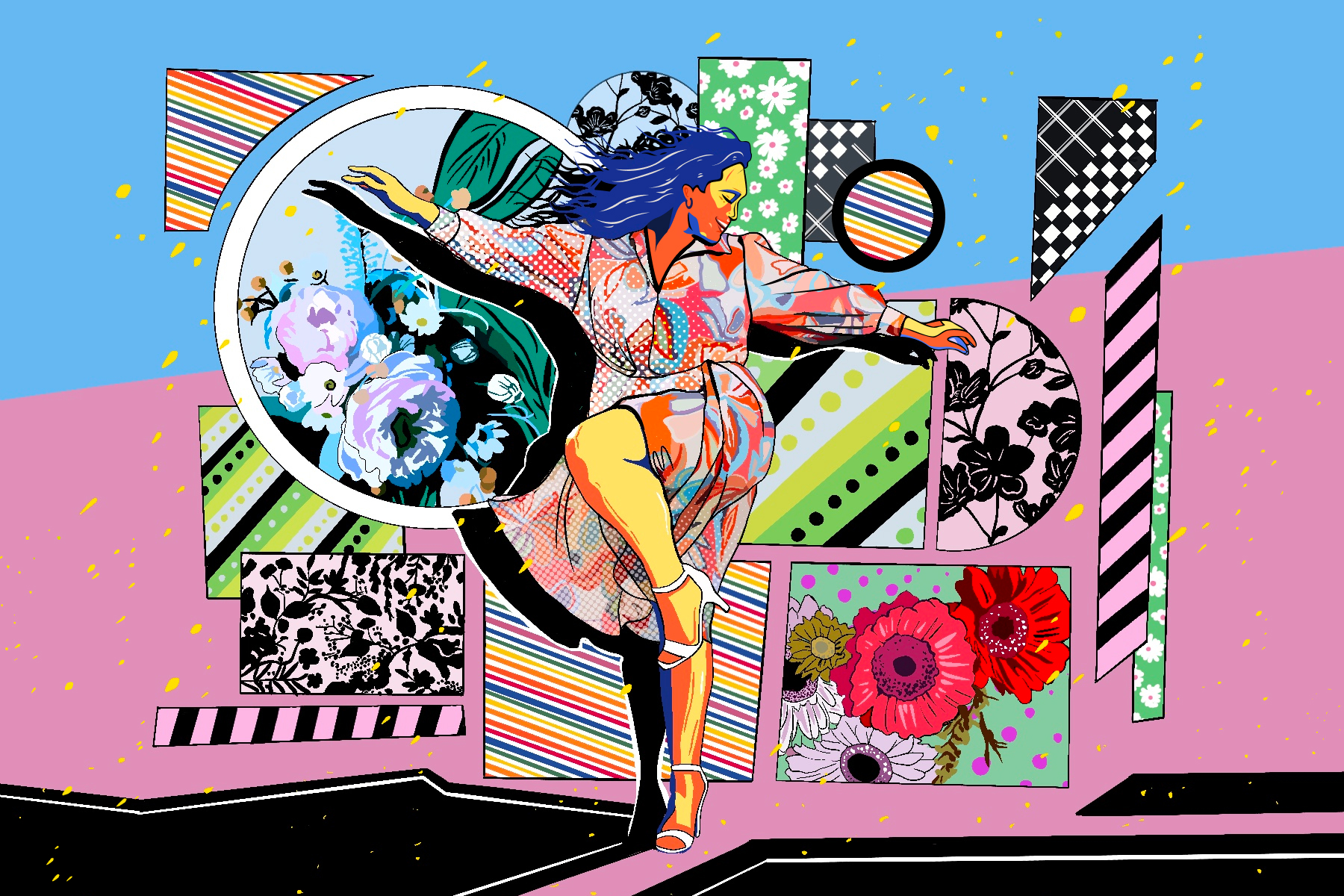I will admit to being taken aback when I first saw the Christopher John Rogers display at Target. I am not alone in this. Many people were quick to label the dresses as “unflattering” or “obnoxious” due to the bright color palette and unique shapes that characterized the collection. However, these dresses represent a significant shift in Target’s previous collaborations. Aside from the dresses, Rogers’ identity as a gay Black man separates him from the overwhelming number of white designers that Target has worked with in the past.
Rogers was born in Baton Rouge, Louisiana. He first noticed his love for design take shape around fourth grade and went on to attend the Savannah College of Art and Design (SCAD). The education he received created a foundation from which he eventually launched into the high fashion world. Rogers’ clothes became easily recognizable because they are as bold and unapologetic as the man who develops them. His distinct style is intentional in drawing a certain kind of clientele toward his designs.
In an interview with WWD, Rogers describes his ideal client as someone who knows who they are and is unafraid of making a statement with their clothing. Such attitudes are reflected easily in the prominent women that Rogers has been able to dress over his career, including Lizzo, Michelle Obama and Rihanna.
Between the clothes that he designs and the people that wear them, it is obvious that any collection Rogers releases is meant for people who want to be seen — a sentiment that many people can relate to as the end of the pandemic nears and there are more occasions that call for getting dressed and leaving the house. However, given the strange circumstances that the country is in, there is an equal number of people that would rather not be seen and make bold statements with what they choose to put on their backs. The two perspectives provide one reason why reactions to Rogers’ collection may be so mixed.
To understand why Rogers’ collaboration with Target is significant, it is important to put it in context with other designers that the retail giant has teamed up with over the years. Target’s partnerships with high-end designers began in 2003 when the company worked together with Isaac Mizrahi to bring high-end fashion to the public for a fraction of the price. The Mizrahi collection was characterized by practical pieces that could all be summed up in one word: preppy. The commercial that advertised the collection featured cardigans, collared shirts and printed skirts, all very safe articles of clothing that already existed in the average person’s wardrobe in one form or another. The launch of the Mizrahi collection with Target offered the same thing, but with a designer label attached.
At the turn of the decade in 2010, the home and garden sections, as well as apparel sections for men, women and children, were overrun with the floral patterns of Liberty of London. The clothes in this set were pieces that nearly anyone could wear and feel good about themselves in. The clothes in the women’s department for this series were characterized by modest-cut blouses and ankle-length dresses.
The year after the Liberty of London collaboration came one with Missoni. The response to this alliance was overwhelming with most of it being sold out only days after the release. For the Missoni collection, Target kept up the same trend it had for the past 10 years: Use the patterns and color palettes of the designer and apply it to trendy but practical cuts and silhouettes for a general audience.
The clothes that came out of the Target and Rogers collaboration, however, represent a distinct shift in the formula that Target has used for the past two decades. Rather than only keep the color palette of Rogers’ clothes, the silhouette was maintained as well. Unlike previous collaborations, you could look at a dress from Roger’s collection, compare it to one of his runway shows and see similarities beyond just the colors and patterns.
The combination of a high fashion silhouette in conjunction with Rogers’ typical bold patterns and colors is what makes his collection stick out from others that Target has released. The merge of these two elements makes the clothes look more like ones that exist on the catwalk. Runway fashion — or anything that resembles it — is something that not everyone is going to have a taste for, especially when you take into consideration that runway fashion is more of an expression of art than clothing that is meant for everyday wear.
Most of Target’s other collections typically included practical pieces of clothing that featured a luxury tag; it allowed consumers the chance to wear something that fit in with their day-to-day wardrobe while feeling elevated at the idea that the item had high-end designer elements associated with it. Rogers’ series, however, dares people to push beyond owning subtle pieces of designer clothing to make statements with what they are wearing.
Aside from his designs, Rogers’ identity also makes him stand out from other designers that Target has collaborated with. He is the first gay Black man to work with Target in this way. His identity serves as a statement about Target’s commitment to celebrating diversity, although whether it’s a genuine commitment or a performative one is another question entirely.
Roger’s identity as a person of color relates to how his pieces flatter women of color. In his fashion shows, he uses mostly models of color to showcase the bold and bright colors that his pieces are known for. His Target collection is no exception. If you type “Christopher John Rogers” into YouTube, you see an overwhelming number of videos in which Black women are trying on and reviewing different pieces within the collection. Whether it was intentional or not, his collection speaks to women of color in a way that other Target collaborations have not — one more way that Rogers has changed the fashion world.

















